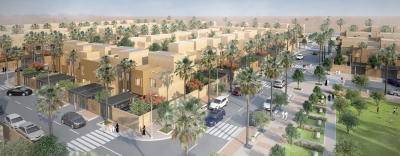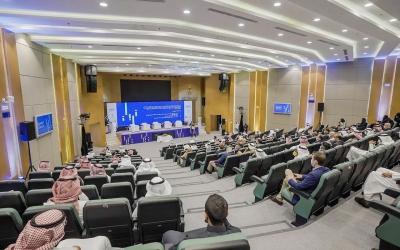
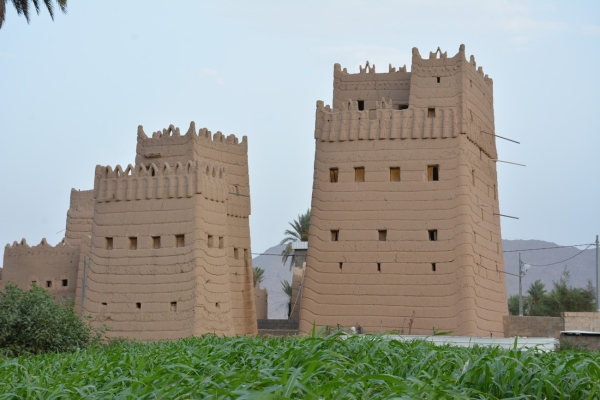
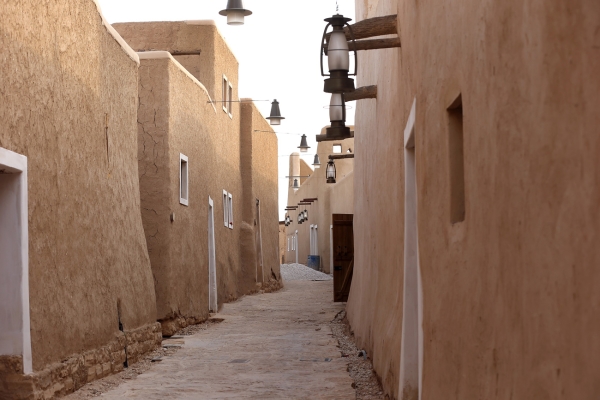
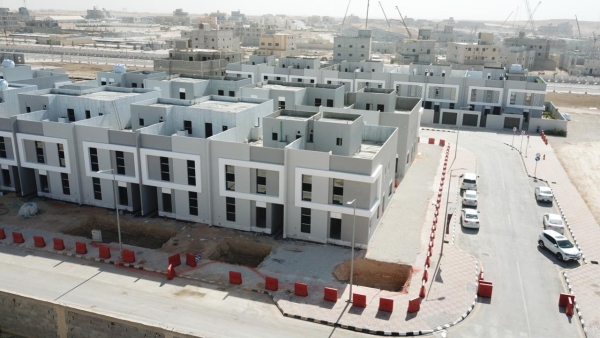
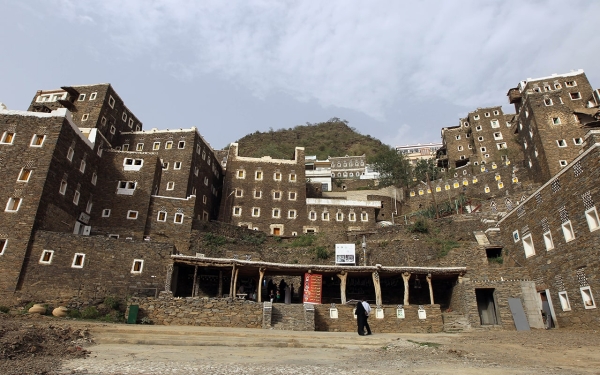
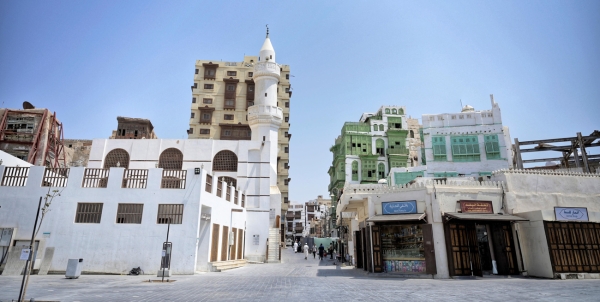
Building construction in the Kingdom of Saudi Arabia involves both traditional and modern construction systems in the Kingdom, and their design and construction are governed by a set of official rules that align with the social reality and the local environment.
Identity of buildings in the Kingdom
The architectural identity in the Kingdom is closely linked to the local culture, and the traditional architectural styles vary according to the regional environments. For example, the architecture of al-Ahsa follows the style of the Arabian Gulf, the architecture of Hijaz is characterized by the Red Sea Basin style, the architecture of Aseer follows the Sarat style, and the Najdi architecture represents the style of the central region.
There is a clear difference in climate and terrain, as well as in the diversity of available building materials, which has influenced the architectural and urban patterns of traditional settlements in the Kingdom. Despite their differences, all these patterns have distinguished themselves by highlighting building materials and offering architectural and urban solutions and designs that meet usage needs and suit the surrounding environment. This has led to the longevity of these patterns over a long period.
Supervision of building construction in the Kingdom
The building authority, headed by the municipalities and authorities authorized to operate under the Law of Municipalities, oversees construction activities in the Kingdom. Engineers, architects, interior designers, safety inspectors, environmental scientists, real estate developers, contractors, and manufacturers of building products and materials all participate in its implementation.
According to the Law of Roads and Buildings, constructing a building in the Kingdom requires submitting an official request and attaching a preliminary drawn model of the desired building to the relevant municipal authorities, along with a prior plan for the plot of land on which the building will be constructed.
All cities in the Kingdom are designed according to architectural maps based on the size of the city and its administrative status. Through these maps, the city is divided into residential areas, locations for workshops, factories, warehouses, slaughterhouses, and stables for horses and cattle, among others. Consequently, differences in architectural styles between one city and another become apparent.
Classification of buildings in the Kingdom
Buildings in the Kingdom are classified according to building materials into first, second, and third grades. They are constructed on lands categorized by municipal divisions into residential areas, shop and market areas, auction squares, and areas for health-damaging crafts. If public planning interests necessitate the removal of a part of a building or an entire building, the municipal authorities must financially compensate the building owner, with the assistance of a special committee to assess the compensation.
The construction style varies from one building to another according to the diversity of their intended uses. Residential buildings cannot be used for public functions such as mosques, hospitals, government offices, schools, hotels, entertainment venues, or stables unless the owner obtains an official permit granting the right to use the building for the desired purpose under specific conditions. Additionally, the landowner is not allowed to subdivide the land into smaller plots for multiple uses, such as selling or planning, without official permission from the building authority.
The building authority determines the building's area based on the prevailing conditions of the surrounding structures. The municipality sets the allowable building area through an imaginary line, ensuring adequate space between one building line and another according to the general context of the buildings. This space is subject to public rights, and landowners are not allowed to construct any buildings within it except for arcades (arches), balconies, and canopies, which require an official permit. Individuals have the right to pass beneath these arches and balconies.
Saudi Building Code
On January 24, 2017, the Kingdom approved the implementation of the Saudi Building Code through a Royal Decree. The Decree stipulated that the code be applied to all construction activities in both the public and private sectors, including the design, execution, operation, maintenance, and modification of buildings. The code also applies to existing buildings in cases of renovation, change of use, expansion, or modification.
Building construction law in the Kingdom
The law of buildings takes into account the nature of social life in the Kingdom. The building regulations stipulate that public gathering places must be planned with multiple doors and exits, with a minimum of two, aligning with the custom of majlis (reception areas) designated for welcoming guests in the Kingdom. The law allows the building owner to allocate part of a shop or commercial establishment for residential use. It also emphasizes the necessity of constructing buildings in a way that permits the passage of sunlight and air.
The law stipulates that employees of the building authority are not permitted to conduct inspection tours without obtaining permission from the building owner or to enter personal spaces in homes without giving adequate notice for evacuation. Buildings in the Kingdom have a specific identification system, where each house or shop is assigned a unique number according to a sequential system that includes the buildings on the street or alley where they are located.
Modern engineering in buildings of the Kingdom
With the population and economic growth in the Kingdom, it is currently one of the largest and fastest-growing construction markets in the Middle East and the world. This sector has seen significant advancements in recent decades, with modern architectural engineering and reinforced concrete structures replacing traditional building methods. Technological advancements have also contributed to the enhancement and revitalization of the construction and building sector.
Building construction in the Kingdom has undergone a significant transformation by transferring, localizing, and developing the residential unit industry. This has been achieved through the adoption of building automation systems to address the current and future housing challenges in the Kingdom. The building sector consumes about 29 percent of the total primary energy in the Kingdom. The Saudi Energy Efficiency Center aims to improve and enhance energy consumption efficiency in the sector by establishing the necessary technical regulations, policies, laws, and procedures in collaboration with relevant entities.
King Salman Charter for Architecture and Urbanism
The King Salman Charter for Architecture and Urbanism represents a strategic foundation for urban development and the future, serving as a design methodology that highlights the history and culture of the Kingdom. It acts as a guiding framework for decision-makers, specialists, and those interested in architecture and urban planning. The charter is inspired by a comprehensive creative experience, the result of deep thought, and a summary of a complete vision for Salmani architecture. This creative experience is the outcome of a clear interaction between real-life experience and ambitious aspirations for betterment. It has taken shape both in form and substance to establish a distinguished position among architectural styles.
The charter adds dimensions to the Saudi architectural style that blends authenticity and modernity. It aims to define the vision of the Custodian of the Two Holy Mosques King Salman Bin Abdulaziz in urban development based on authenticity as the essence of creativity, with the flexibility to interact with the new, as well as foresight in penetrating barriers of time, place, and materials, envisioning the aesthetic enhancements that lie beyond.
As one of the national initiatives through which the Architecture and Design Commission seeks to establish Salmani architecture, the exhibition "King Salman Charter for Architecture and Urbanism" was organized in several cities. It aimed to highlight the vision of the Custodian of the Two Holy Mosques in embodying the authenticity of architecture, and its connection to a genuine national and urban identity rooted in local roots, cultural, geographical, social, and climatic conditions. Its latest stop was in al-Madinah al-Munawwarah in June 2022, following four previous stops in Riyadh, Abha, Jeddah, and Dhahran.
International certifications for Saudi buildings
In confirmation of the development of Saudi buildings, in 2022, the U.S. Green Building Council (USGBC) awarded King Abdullah Petroleum Studies and Research Center (KAPSARC) in the Kingdom five Platinum Certifications in the Facility Management category for Operations and Maintenance. 'KAPSARC' facilities are the only buildings in the Kingdom to achieve Platinum Certification for Sustainable Operations and Maintenance. KAPSARC buildings are designed in hexagonal cell shapes to help reduce energy consumption, especially during the summer season.
Related quizzes
Related articles
